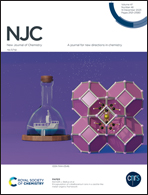pH/hyaluronidase dual responsive nano drug delivery systems for photothermal/chemotherapy combined treatment for non-small cell lung cancer†
Abstract
In recent years, the effectiveness of traditional treatment in non-small cell lung cancer (NSCLC) has become increasingly poor, and a new therapeutic strategy should be explored to solve the current problem of poor efficacy. Phototherapy based on stimuli-responsive nanocarriers combined with chemotherapy has drawn considerable attention as a kind of and significant potential tumour treatment method. By loading the drug osimertinib (AZD) and the targeting agent hyaluronic acid (HA) onto red-emitting carbon dots, a biocompatible multifunctional nanocrystalline drug carrier system (RCDs-HA@AZD) with dual stimulation of pH and hyaluronidase has been developed for chemotherapy/photothermal combination therapy of NSCLC. RCDs-HA@AZD has the ability to target NSCLC tumours with the loading of HA. Simultaneously, the tumour killing ability can be enhanced through a reasonable synergistic effect of the photothermal effect of RCDs and the anti-tumour function of AZD. This work provides inspiration for a combined anti-NSCLC therapeutic strategy as well as offers promising prospects in both fundamental and clinical investigations.



 Please wait while we load your content...
Please wait while we load your content...